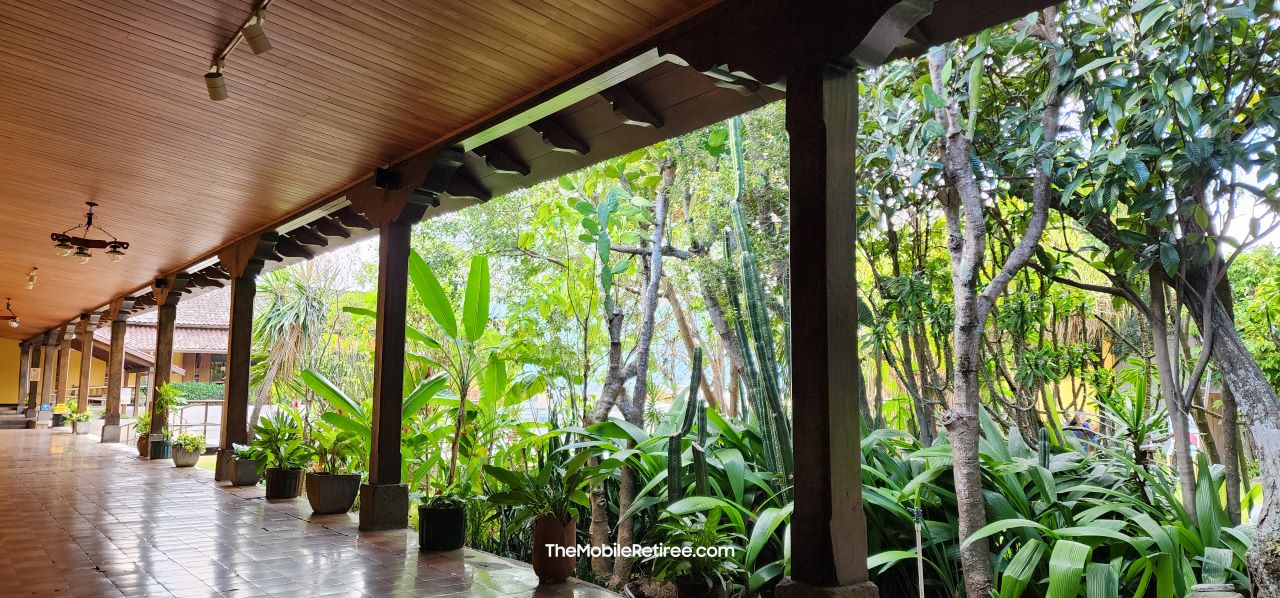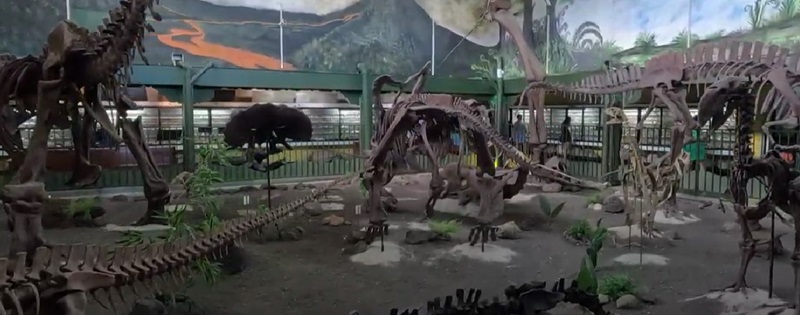Our Visit to the National Theater of Costa Rica
The National Theater of Costa Rica, located in the heart of San José, is a must-visit landmark for anyone interested in the country’s history and culture. Built in 1897, this neoclassical building showcases Costa Rica’s commitment to the arts and its European architectural influence. A guided tour offers a closer look at the theater’s history, design, and its role in Costa Rican culture. From detailed murals to marble statues, there’s much to appreciate, even if you’re not deeply familiar with theater or architecture. Whether you’re planning to see a performance or just explore the space, the National Theater offers something for every curious traveler.
Our visit to the National Theater of Costa Rica came about unexpectedly. We had initially planned to spend a month relaxing on the beach in Puerto Viejo de Talamanca, considering it as a potential retirement spot. However, we soon realized we needed more than just beachside relaxation and sought cooler temperatures and more activities. This led us to explore things to do in San José, where the National Theater was a highlight.
PLAN YOUR TRIP WITH OUR FAVORITE RESOURCES
Book Hotels: Expedia,Booking
Flight Deals: DailyDrop
Book Flights: Skyscanner, Google Flights
Book Tours: GetYouGuide, Viator
Reserve a Rental Car: Discover Cars
Travel Insurance: VisitorsCoverage, SafetyWing
Stay Connected: Airalo, local SIM
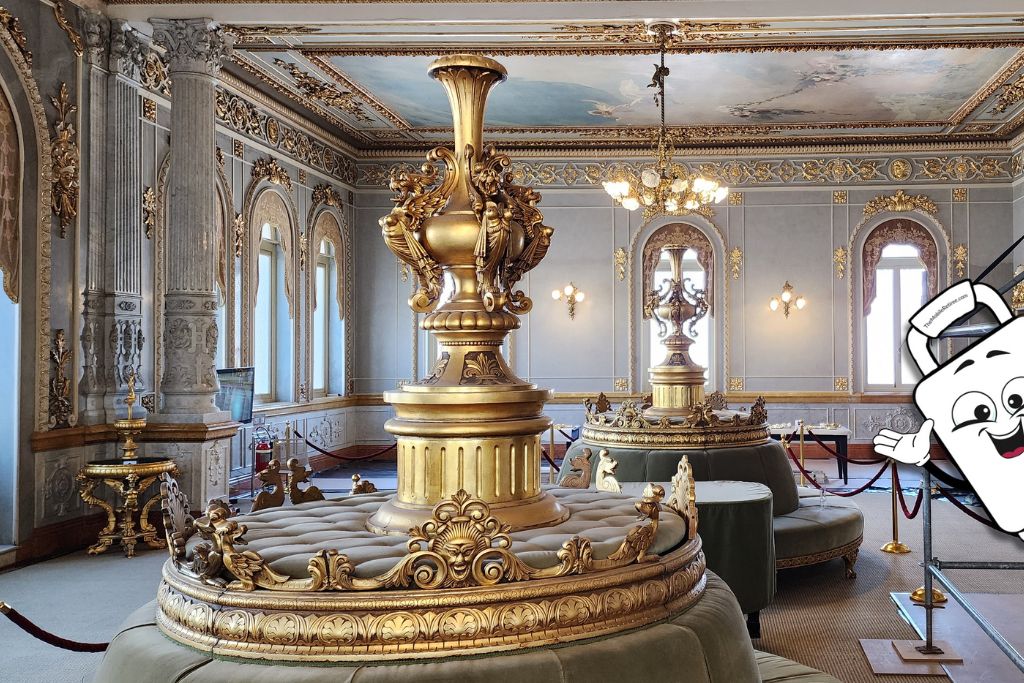
Exploring the National Theater
During our visit, we took a guided tour that gave us a closer look at the theater’s history, design, and role in Costa Rican culture. From the detailed murals to the marble statues, we found plenty to appreciate, even if you’re not deeply familiar with theater or architecture.
Construction started in 1890, initially funded by a tax on coffee exports, later shifting to a tax on imported goods, the building officially opened its doors in 1897. In 1965 it was declared a National Monument. As the theater was originally built based on demands of the local population who wanted a replacement for the previous municipal theater – which had been destroyed by an earthquake – the entire history is one of essentially public ownership.
Lobby
As we stepped into the National Theater, every direction beckoned with noteworthy features. The intricate details, reminiscent of both baroque and rococo styles, and occasional hints of art deco, immediately caught our attention.
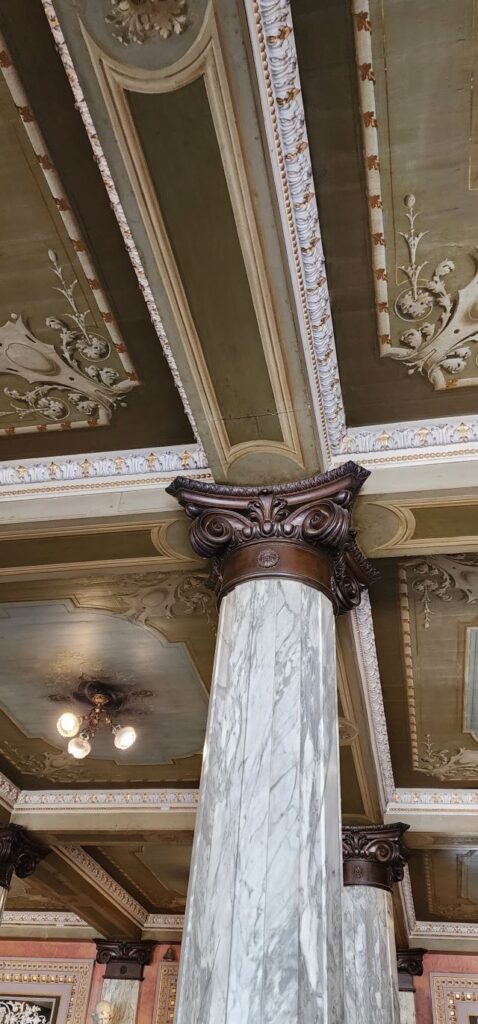
The theater’s construction involved significant contributions from Italy, from sculptures to artists. The ceiling artwork, akin to the grandeur of the Sistine Chapel, adorned the space. Even the second-floor seating area surprised us with cameos painted on the ceilings, adding an unexpected layer of detail. The entire space was a masterpiece of craftsmanship, from the sculpted columns to the impressive tilework on the floors. No surface was left undecorated, making every corner a visual delight.
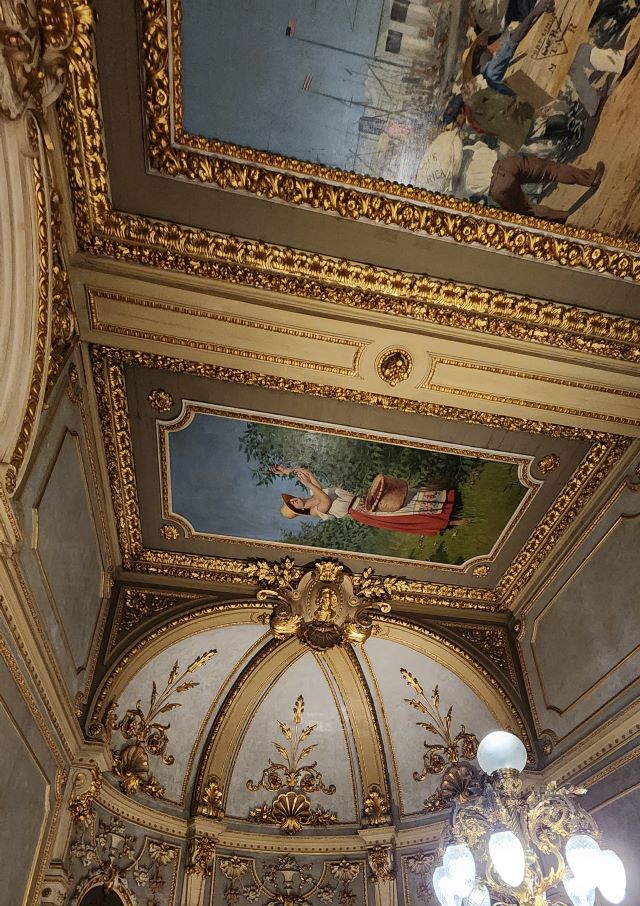
The standing lighting fixtures in common areas showcase unique designs, each a testament to intricate detailing featuring cherubs, angels, floral motifs, and the occasional dolphins.
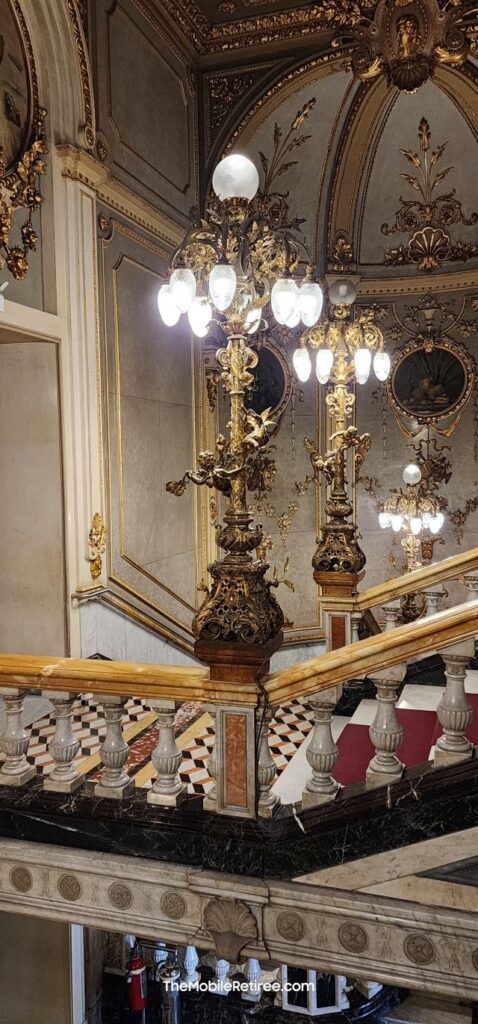
Auditorium
The auditorium, styled after a 19th-century opera house, is breathtaking. The ceiling displays Roberto Fontana’s masterpiece from 1897, and a huge chandelier hangs from the center. We were lucky enough to witness the chandelier being lowered for cleaning and bulb replacement! The main floor, with its traditional sloping design, has a surprising feature: it can be raised to stage level in about twenty minutes using a human-powered mechanism in the basement, allowing the theater to host a wide range of productions. The mechanism to allow this is pretty spectacular on its own and is still in use to this day.
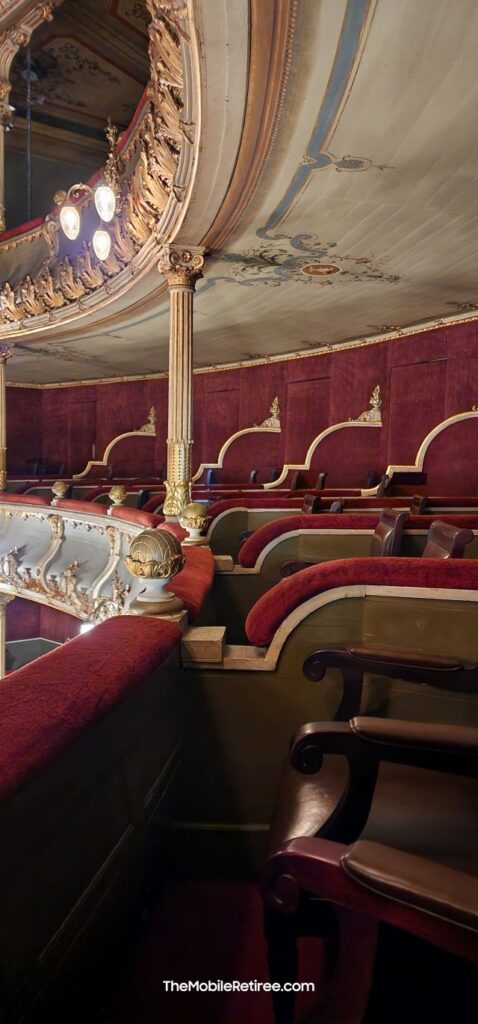
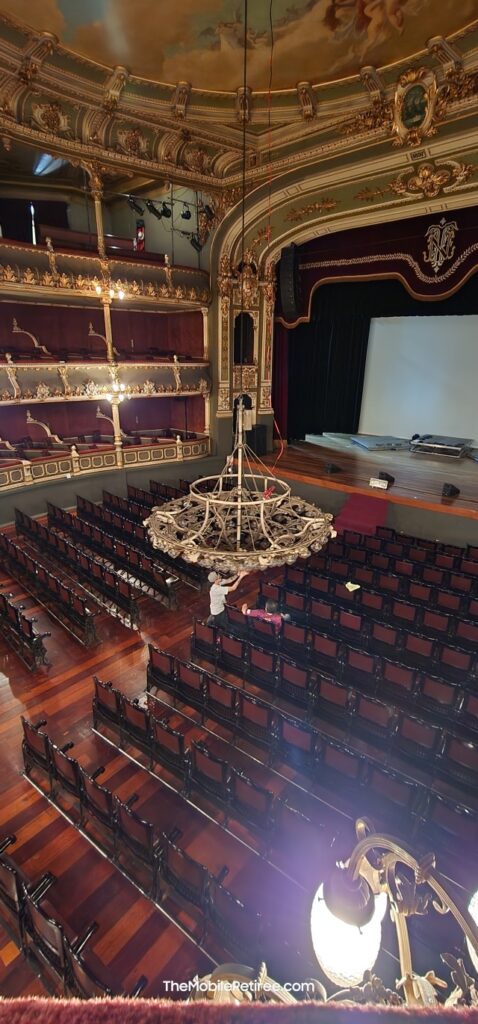
Restoration in Progress
At the time of our visit the theater was undergoing an intensive restoration which highlighted the theater’s commitment to preserving its history. Lucky for us we were given a peek into the restoration on the third floor where restoration experts are removing the plaster decorations from the walls, painstakingly cleaning the pieces and applying new gold leaf before the decorations are returned to their rightful place.
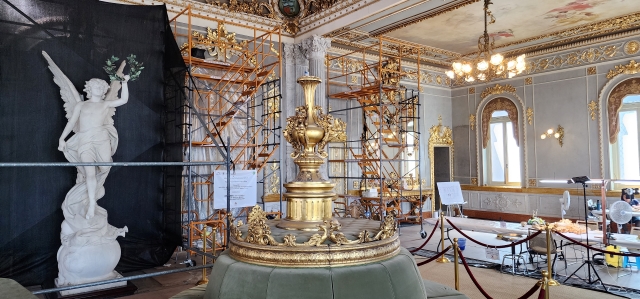
The third floor also houses the most blatant reminders of how much differently the upper class was treated in years past. Ornate and plush couches for relaxing during intermission as well as dedicated smoking rooms – one for the gentlemen and one for the ladies, thank you very much – live beneath an exquisitely painted ceiling and are overseen by impressive sculptures.
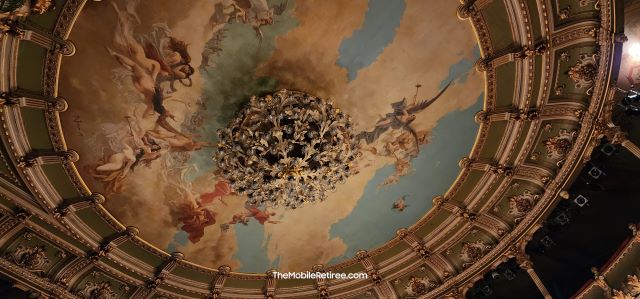
Is the Guided Tour of the National Theater worth it?
Our tour was knowledgeable and thorough, we really enjoyed the experience a great deal. Our tour guide gave us an amazing amount of information on the history of the theater as well as some insight on the various design elements. She also pointed out a lot of details we wouldn’t necessarily have noticed on our own (plus a guided tour is the only way to see the inside of the theater). Since we are both interested in art, architecture and history we felt that it was well worth the time and money as well as a good value.
For those with limited time
For those with limited time or no interest in the actual interior of the theater, you can explore the impressive lobby and grounds for free. We suggest allocating around twenty minutes for a self-guided tour of the grounds and the lobby. The guided interior tour took about 45 minutes on top of the time we spent wandering on our own.
Where to get tickets to the National Theater of Costa Rica
When you first arrive on the site, there is so much to take in, it’s a grand building, so the Boletaria (or ticket office) sign isn’t really the first thing you see. And the ticket office is not in the most obvious location (inside the lobby) but rather the ticket office is located around to the left side of the building as you face the main entrance.
Once you have your ticket, you needed to return to the lobby about 15 minutes before your scheduled tour and check in for your tour. At the time of our visit the check-in desk was located at the far right hand corner of the lobby as you come in – there is a wee little desk. When you check-in, they’ll give you a qr code sticker to put on your chest. The gathering process is a little chaotic because it’s a big lobby with a lot of people (both for the tour and just visiting the lobby, plus people coming in and out of the Alma De Café.) In our case we spotted the obvious Americans and once we got involved in conversation more English speakers joined us so the group was pretty much gathered when the tour guide came to collect us.
For a more comprehensive look at what you’ll see on the tour, watch our video of the experience on YouTube below
Practical Information for Your Visit:
- Where is the National Theater of Costa Rica?: The theater is located at Avenida 2, C. 5, San José, Catedral, Costa Rica. The Main entrance is located on the pedestrian walkway between the theater and the Plaza Juan Mora Fernández
- Opening Hours: The National Theater of Costa Rica is open Monday through Sunday, from 9 am to 4 pm every hour with guided tours every hour.
- Important Note about Guided Tours: As stated earlier the Spanish and English tours are staggered, meaning they are scheduled at different times throughout the day. For example, an English tour might start at 10:00 AM, while a Spanish tour could begin at 11:00 AM. This allows the theater to accommodate speakers of both languages without overlapping tours.
- Also Note: English Tours sell out quickly! Go to the ticket booth early in the day and purchase your tickets. We had arrived at 1:45 PM only to find that all the English tours were sold out. Fortunately, when we came back the next morning at 9:45 we were able to secure spots on a 10:15 AM English tour.
- Ticket Prices: Guide Tour Tickets are priced in colones (CRC 3,500 for foreigners), which at the time of our visit was roughly $1 USD = 514 CRC. For the two of us, the total cost was less than $14 USD.
- Is the Alma De Café attached to the theater worth visiting? The cafe was packed while we were there so we chose to skip it – there are plenty of other cafes in the area
Wondering Where to Stay near the National Theater of Costa Rica?
Best Luxury Hotels near National Theater of Costa Rica
Best Budget Hotels near National Theater of Costa Rica
Short-Term Rentals with Kitchens near National Theater of Costa Rica
More than just a list of things to do, we hope this inspires you to step out of your comfort zone and discover the rich experiences that await in San José. Share the adventure with your friends!

Support independent travel writers
Love our travel stories? Be part of our journey! Help us brew up more travel tales and support independent content creators like us, Buy Us A Coffee. We’ll give you a shout out in one of our videos! Click the cup to show your support!



